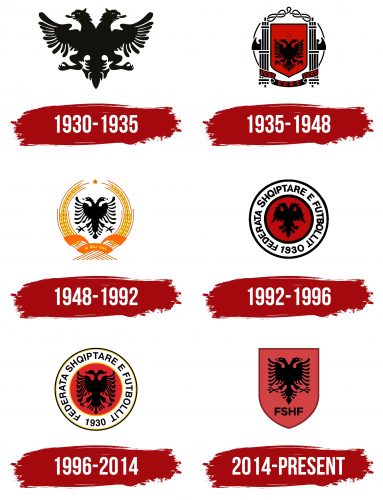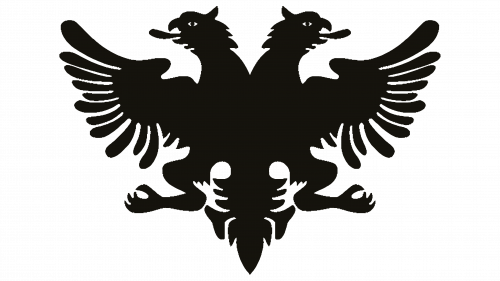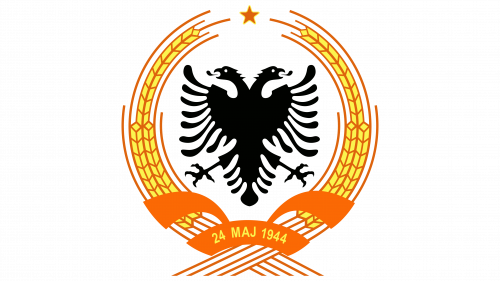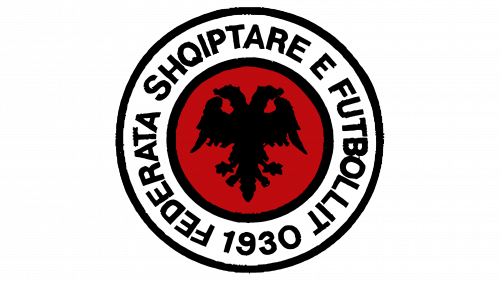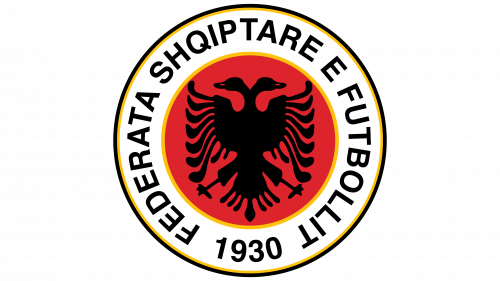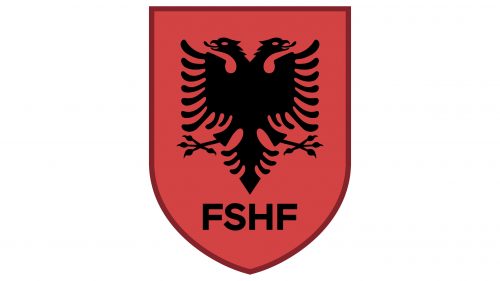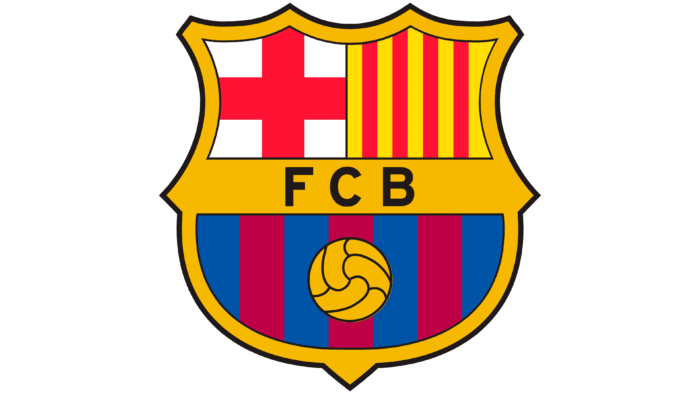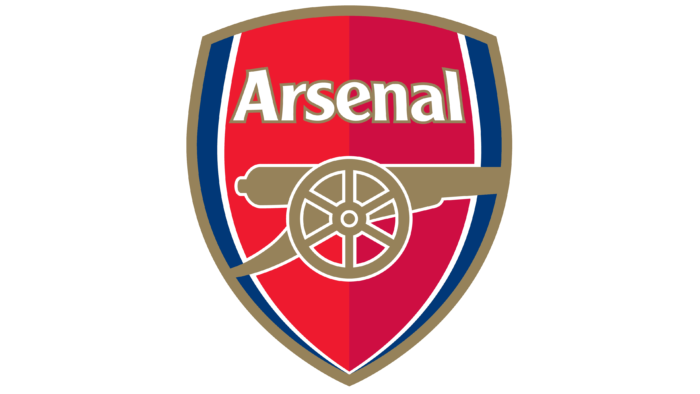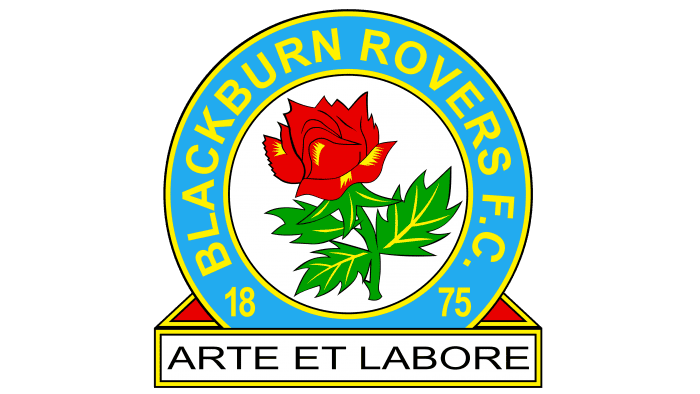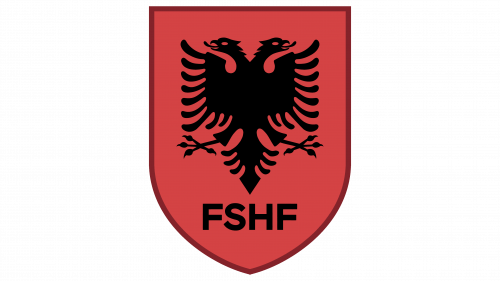 Albania National Football Team Logo PNG
Albania National Football Team Logo PNG
The Albania National Football Team’s logo is very patriotic and inspiring. The strength of the eagle bestows the team with qualities essential for victory. The emblem reflects attentiveness, farsightedness, and ability to assess and manage situations.
Albania National Football Team: Brand overview
The history of the Albanian national football team is a tale of perseverance and a quest for international recognition. Football arrived in Albania in the early 20th century, brought by the Albanian diaspora in the United States, Romania, Greece, and other countries. The sport gradually grew in popularity, and by the 1920s, the first football clubs began to form in Albania.
On March 16, 1930, the Albanian Football Federation (FShF) was established, marking the beginning of organized football in the country. Shortly after World War II, the national team played its first official match in 1946 against Yugoslavia, narrowly losing 2-3. This game showcased the young nation’s determination to make its mark on the football field.
The following decades were tough for the Albanian team, largely due to the isolationist policies of Enver Hoxha’s communist regime. The country missed out on early major tournaments like the World Cup and European Championships. In 1962, the FShF joined FIFA, allowing the national team to participate in World Cup qualification rounds. Albania played its first World Cup qualifier in 1964 against Greece, suffering a 0-4 defeat.
A pivotal moment came during the Euro 1968 qualifiers when Albania secured a 0-0 draw against West Germany, symbolizing the resilience and skill of Albanian players. The 1970s and 1980s saw individual achievements inspired by Albanian footballers abroad. The legendary Panajot Pano became the first Albanian to score in the UEFA Cup final while playing for Bastia. Revas Demetradze shone in France’s Ligue 1 with Nantes and Sochaux.
The fall of communism in 1992 opened the door for the Albanian national team to enter the international stage. In 1994, they played their first match with professional players. The Euro 1996 qualifiers were memorable for significant victories over Ireland and Northern Ireland, although Albania did not advance.
The 2000s brought challenges, marked by unsuccessful qualifications and internal turmoil within the national federation. A new era began in the 2010s under Italian coach Gianni De Biasi. In 2016, Albania qualified for the European Championship for the first time. Their participation, despite elimination in the group stage, ignited the passion of Albanian fans. At Euro 2016, the world witnessed the fervor of Albanian supporters. Before their match against Romania, tens of thousands of fans in bright red shirts filled the streets of Lyon, singing national anthems and waving flags. The atmosphere was so intensely patriotic that commentators likened it to a movement for independence.
The highlight of the tournament was the match against hosts France. Albania initially led but eventually succumbed to their formidable opponents. Nonetheless, Albanian players earned widespread respect for their spirited performance. Heroes like Lorik Cana and Ergys Kaçe captured the hearts of fans across Europe.
Following its Euro 2016 success, Albania faced new challenges. They fought for a spot in the 2018 World Cup but fell short against Italy in a crucial match. Coach Gianni De Biasi resigned, and Italian specialist Edy Reja became the first foreign head coach in the team’s history.
Under Reja’s guidance, Albania embarked on a tough journey in the Euro 2020 qualifiers. In a dramatic playoff, they triumphed over Iceland at home but were defeated by Hungary in the decisive match. Despite the disappointment, the current team exhibits commendable character and dedication. In 2019, Albania reached its highest-ever FIFA ranking, achieving 22nd place.
The Albanian national football team’s story is one of perseverance and unwavering commitment. They continuously strive to earn their place on the global stage and inspire pride in their nation.
Meaning and History
What is the Albania National Football Team?
The Albania National Football Team represents Albania in international football competitions. Managed by the Albanian Football Association (FSHF), the team has made significant strides in recent years, gaining recognition in European football. Known for their determination and strong defensive play, the team has competed in various major tournaments, striving to showcase their talent and improve their standings on the international stage. Albania’s passionate fan base and growing football culture reflect the country’s dedication to the sport, making the national team a source of national pride and unity.
1930 – 1935
The national team officially formed with the establishment of Federata Shqiptare e Futbollit in 1930, although players had gathered much earlier. The athletes received a logo with the official opening and joining of FIFA.
As a national team, they chose to wear part of the country’s coat of arms and flag—a two-headed black eagle, a symbol used since 1458. Albanians see themselves as children of eagles, and folklore includes legends linking the nation’s origin to eagles.
The football team aimed to embody the strength, unity, and heroism associated with the king of the skies. The two heads, looking in different directions, symbolize alertness and vigilance. The eagle’s outstretched wings seem to bless the athletes for the game.
1935 – 1948
The team revised the logo to add heraldic elements to prepare for their first international matches. The double-headed eagle was placed on a red shield and crowned with a historical helmet featuring a goat’s head. This design mirrored Albania’s shield, emphasizing the athletes’ courage and nobility.
Two quivers with axes and rifles were added to either side of the image, serving as a symbol of intimidation for opponents and representing the struggle for the people’s freedom and victory on the football field.
An iron wreath made of metal rods surrounded the image. Tied in two knots, it symbolized the indomitable spirit and the ability to muster willpower.
At the bottom, a heraldic ribbon featured the word FERT written three times. The word is an acronym for F – “Fatos” (heroes), “Erdhi” (came), “Rrëmbyen” (seized), and “Trimërinë” (bravery). This motto is connected to the historical figure Gjergj Kastrioti (Skanderbeg), a national hero of Albania. The motto symbolizes Skanderbeg’s struggle against the Ottoman Empire. The emblem represented courage, patriotism, and strength; it symbolized the team’s resilience and determination in football.
1948 – 1992
After the communists came to power, the athletes’ logo closely resembled symbols of the USSR. In the center, a double-headed eagle is surrounded by a wreath of wheat topped with a star. The wheat symbolized the abundance and hard work of the Albanian people and the rule of the working class under the Albanian Party of Labor.
The star represented unity with the Soviet communists. Its five points symbolized workers’ solidarity from five continents, uniting the oppressed in their struggle for rights.
The date at the bottom marked the victory of the communist resistance Ushtria Nacional Çlirimtare during World War II.
The team’s logo embodied a spirit of patriotism, national pride, and alignment with the people’s common interests and aspirations. The symbol appealed to the noble feelings of love for the homeland and motivated athletes to honor and glorify Albania on the football field.
1992 – 1996
By the start of the 1994 World Cup qualifying tournament, the team had changed its logo. The new emblem resembled a seal. Around the border, it displayed the organization under which the national team played—FEDERATA SHQIPTARE E FUTBOLLIT—and its founding date. This reference to the federation highlighted the team’s long-standing experience and official endorsement at the national level.
The center retained elements of national identity—a double-headed eagle on a red background. The combination of football themes and patriotic notes supported the fighting spirit and encouraged the athletes.
1996 – 2014
In 1996, the emblem was slightly refined. Replacing the bold lines with thin ones removed the massiveness and heaviness of the symbol. The logo now appears sporty and light. The eagle mirrors the one on the coat of arms, with its feathers spread wide. This image symbolizes the unification of players into a single team, allowing them to “fly” across the field while controlling the ball. The round shape of the emblem echoes the primary piece of equipment in football. The simple and compact logo is memorable and expresses the team’s core values.
2014 – today
In preparation for Euro 2016, the national team updated its logo again. The design closely mirrored the country’s coat of arms with a few modifications. The military helmet was omitted, focusing solely on the eagle. At the bottom of the emblem, the FEDERATA SHQIPTARE E FUTBOLLIT abbreviated emphasized the team’s continuity and long-standing cooperation with the national federation.
The red hues and the proud, strong eagle represented the athletes’ fighting spirit, who continued to compete and believed in victory despite the lack of significant results. The emblem highlighted the athletes’ bravery, endurance, and determination qualities.
